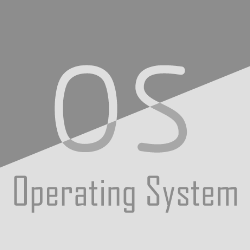Robots are integrating more huge-size models to enrich functions and improve accuracy, which leads to out-of-control computing pressure. And thus robots are encountering bottlenecks in computing power and battery capacity. Fog or cloud robotics is one of the most anticipated theories to address these issues. Approaches of cloud robotics have developed from system-level to node-level. However, the present node-level systems are not flexible enough to dynamically adapt to changing conditions. To address this, we present ElasticROS, which evolves the present node-level systems into an algorithm-level one. ElasticROS is based on ROS and ROS2. For fog and cloud robotics, it is the first robot operating system with algorithm-level collaborative computing. ElasticROS develops elastic collaborative computing to achieve adaptability to dynamic conditions. The collaborative computing algorithm is the core and challenge of ElasticROS. We abstract the problem and then propose an algorithm named ElasAction to address. It is a dynamic action decision algorithm based on online learning, which determines how robots and servers cooperate. The algorithm dynamically updates parameters to adapt to changes of conditions where the robot is currently in. It achieves elastically distributing of computing tasks to robots and servers according to configurations. In addition, we prove that the regret upper bound of the ElasAction is sublinear, which guarantees its convergence and thus enables ElasticROS to be stable in its elasticity. Finally, we conducted experiments with ElasticROS on common tasks of robotics, including SLAM, grasping and human-robot dialogue, and then measured its performances in latency, CPU usage and power consumption. The algorithm-level ElasticROS performs significantly better than the present node-level system.
翻译:机器人正在整合更大型的模型,以丰富功能,提高准确性,从而导致超出控制的计算压力。 因此机器人在计算电量和电池能力方面遇到瓶颈。 雾或云机器人是解决这些问题的最预期理论之一。 云机器人的方法已经从系统层面发展到节点层面。 但是, 目前的节点级别系统不够灵活, 无法动态地适应不断变化的条件。 为了解决这个问题, 我们演示了 ElasticROS, 它将目前的节点水平系统演变成一个算法级别。 以 RO 和 RO2 为基础, ElasticROS 的计算在计算电动和 RO 中遇到了瓶颈瓶颈瓶颈。 Elestoros 开发了第一个机器人操作系统, 与算法级别合作。 Elasticoros 开发了弹性协作计算方法, 以适应动态条件的适应动态条件。 合作算法是当前问题的核心和挑战。 我们抽象了问题,然后提出一个名为 Elastical 的算法。 这是基于在线学习的动态动作决定, 确定机器人和服务器水平是如何合作的。 对于雾和云操作, 更新参数参数的参数, 以调整参数的参数, 以适应到当前机器人操作到机器人操作的升级的操作, 。



